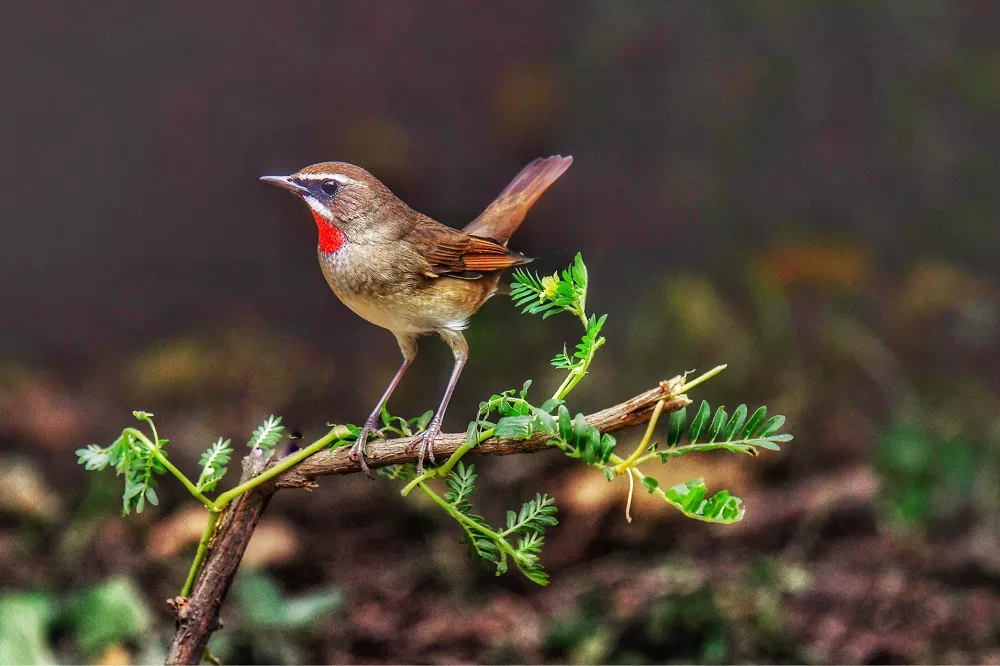The Siberian Rubythroat (Luscinia calliope) is a small bird that belongs to the family Muscicapidae. It is known for its distinctive appearance and beautiful song, which has made it a popular subject among birdwatchers and nature enthusiasts. The Siberian Rubythroat is found in parts of Asia and Europe, where it inhabits forests, wetlands, and other wooded areas. Its range extends from eastern Russia to China, Mongolia, Korea, and Japan, with some populations also found in northern India.
Distribution
The Siberian Rubythroat is a migratory species that breeds in the northeast regions of Asia and winters in southeast Asia. During the breeding season, it can be found throughout much of eastern Russia, as well as parts of northern China, Mongolia, and Korea. In Russia, the bird is commonly found in wooded areas such as taiga and boreal forests, while in China it is often seen in mountainous regions with dense vegetation.
As autumn approaches, the Siberian Rubythroat begins its migration southwards towards wintering grounds in Southeast Asia. Some populations travel as far as Indonesia, Thailand, and the Philippines, while others remain closer to their breeding grounds in southern China and Vietnam.
Habitat
The Siberian Rubythroat is primarily a forest-dwelling species, and it requires dense vegetation and ample ground cover to breed successfully. It is often found in damp areas such as riverbanks, marshes, and wet meadows, where it feeds on insects and other small invertebrates. During the winter months, the bird can be found in a variety of habitats, including scrubland, grassland, and even urban parks and gardens.
Conservation Status
The Siberian Rubythroat is classified as a species of “least concern” by the International Union for Conservation of Nature (IUCN). This means that its population is stable and its range is not significantly threatened by habitat loss or other factors. However, like many migratory species, the Siberian Rubythroat is susceptible to hunting and trapping along its migration route, particularly in China and Southeast Asia.
In addition, the destruction of its breeding habitat through deforestation and other forms of land use change remains a concern in some parts of its range. Efforts are underway in some areas to conserve important breeding sites and raise awareness about the importance of protecting the bird’s habitat.
Conclusion
The Siberian Rubythroat is a beautiful and fascinating bird that is widely distributed throughout parts of Asia and Europe. Its range extends from eastern Russia to China, Mongolia, Korea, and Japan, with some populations also found in northern India. While it primarily inhabits forests and wetlands, it can also be found in a variety of other habitats during the winter months.
Overall, the Siberian Rubythroat is a species of least concern that is not currently threatened by significant population declines or habitat loss. However, conservation efforts are still necessary to protect important breeding sites and reduce hunting and trapping along its migration route. By working together to conserve this remarkable bird, we can help ensure that it continues to thrive for generations to come.
Related topics:


 Facebook
Facebook  Instagram
Instagram  Youtube
Youtube 